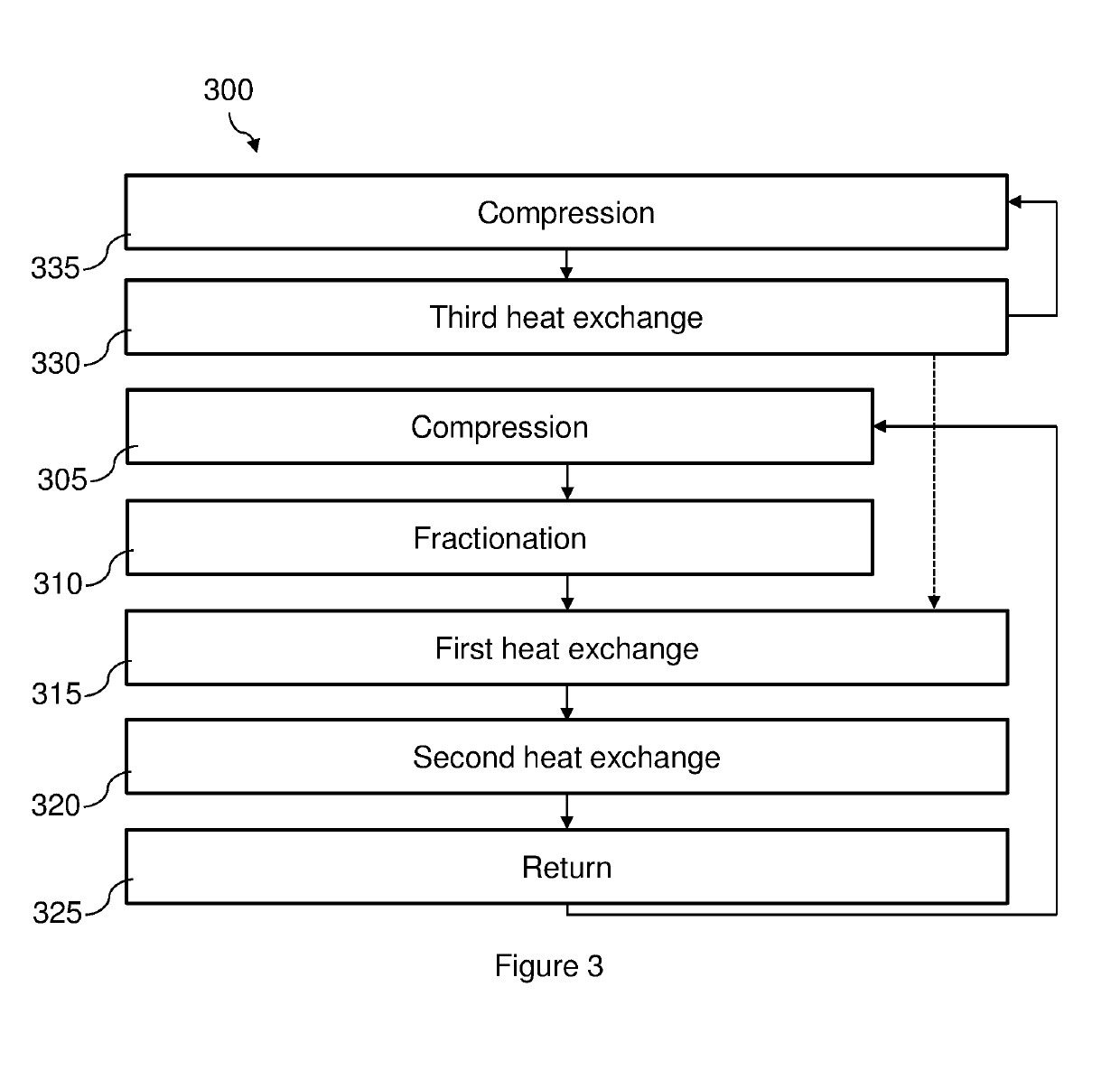Device and method for liquefying a natural gas and ship comprising such a device
a technology of natural gas and liquefying device, which is applied in the direction of liquefaction, solidification, cold treatment separation, etc., to achieve the effect of reducing the energy supply of the system for liquefying
- Summary
- Abstract
- Description
- Claims
- Application Information
AI Technical Summary
Benefits of technology
Problems solved by technology
Method used
Image
Examples
Embodiment Construction
OF REALIZATION OF THE INVENTION
[0117]The present description is given in a non-limiting way, each characteristic of an embodiment being able to be combined with any other characteristic of any other embodiment in an advantageous way.
[0118]It is now noted that the figures are not to scale.
[0119]FIG. 1, which is not to scale, shows a schematic view of an embodiment of the device 100 that is the subject of the present invention. This device 100 for liquefying a natural gas comprises:[0120]a compressor 105 of a first vaporized coolant chemical mixture,[0121]a means 110 for fractionating the compressed mixture into a heavy fraction and a light fraction,[0122]a first body 115 for exchanging heat between the heavy fraction of the first mixture and the natural gas in order to cool at least the natural gas,[0123]a second body 120 for exchanging heat between the light fraction of the first mixture and the natural gas cooled in the first exchange body to liquefy the natural gas,[0124]a conduit...
PUM
 Login to View More
Login to View More Abstract
Description
Claims
Application Information
 Login to View More
Login to View More - R&D
- Intellectual Property
- Life Sciences
- Materials
- Tech Scout
- Unparalleled Data Quality
- Higher Quality Content
- 60% Fewer Hallucinations
Browse by: Latest US Patents, China's latest patents, Technical Efficacy Thesaurus, Application Domain, Technology Topic, Popular Technical Reports.
© 2025 PatSnap. All rights reserved.Legal|Privacy policy|Modern Slavery Act Transparency Statement|Sitemap|About US| Contact US: help@patsnap.com



